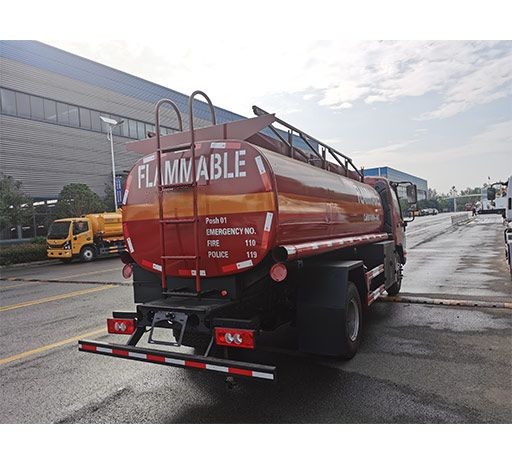Understanding Rush Leasing: A Comprehensive Guide
Rush leasing is an essential concept in the real estate and leasing industries that many people may not fully understand. This article aims to provide a deep dive into rush leasing, examining its benefits, challenges, and practical applications. Whether you are a property owner, a real estate agent, or an individual looking to lease property quickly, understanding rush leasing can help you make informed decisions.
What is Rush Leasing?
Rush leasing refers to the expedited process of leasing property, usually involving a shorter time frame to complete the lease agreement compared to traditional leasing processes. This type of leasing is often sought after by individuals and businesses that require immediate occupancy or need space to be available quickly.
The Importance of Rush Leasing
In today’s fast-paced world, the need for quick decisions and faster actions is more crucial than ever. Rush leasing addresses this need by allowing prospective tenants to secure a lease quickly without compromising on essential terms of the agreement.
Benefits of Rush Leasing
- Speed: The primary advantage of rush leasing is the speed of the leasing process, enabling individuals to move in or occupy a space sooner.
- Flexibility: Rush leasing provides flexibility for tenants who might need to adapt quickly to changing circumstances, such as job relocations or sudden life changes.
- Increased Demand: For landlords, offering rush leasing options can attract more potential tenants, particularly in competitive markets.
The Rush Leasing Process
Step 1: Identify the Need
The first step in rush leasing is to identify the urgent need for leasing a property. This could be due to job relocation, company expansion, or personal circumstances that require immediate settlement.
Step 2: Property Search
Once the need is established, prospective tenants should start searching for properties that meet their requirements. Online platforms, real estate agents, and listings can help narrow down suitable options quickly.
Effective Property Search Tips
- Utilize property search engines that allow for quick filtering based on budget, location, and amenities.
- Leverage social media and local community groups to seek recommendations for available rentals.
- Consider properties that offer flexible leasing terms.
Step 3: Viewing Properties
View properties as soon as possible. Many landlords accommodate last-minute showings for urgent tenants, allowing them to make quick but informed decisions.
Step 4: Finalizing the Lease Agreement
Once a suitable property is found, tenants need to be prepared to finalize the lease agreement rapidly. This may involve gathering necessary documents such as proof of income, identification, and references.
Important Documents for Rush Leasing
| Document Type | Description |
|---|---|
| Proof of Income | Recent pay stubs, bank statements, or employment letters |
| Identification | Government-issued ID such as a driver’s license or passport |
| References | Contact information for past landlords or employers |
| Credit Report | A recent credit report to assess financial responsibility |
Challenges of Rush Leasing
Limited Time for Decision Making
One of the primary challenges of rush leasing is the limited time available to make informed decisions. Tenants may feel rushed into signing agreements without thorough consideration.
Potential for Higher Costs
In many cases, rush leasing may come with a premium that increases rental costs. Landlords may charge extra for accelerated processes, knowing that their property is in demand.
Cost Management Tips
- Negotiate on terms that matter most to you, such as the length of the lease or included amenities.
- Compare prices across different properties to ensure competitive rates.
- Ask about promotions or discounts that may offset rush leasing fees.
Inadequate Due Diligence
The rapid pace of rush leasing can lead to inadequate due diligence, such as failing to inspect properties thoroughly or skipping credit checks. This can result in unforeseen challenges later.

Types of Rush Leasing

Residential Rush Leasing
Residential rush leasing typically involves apartments or single-family homes. It is often used by individuals or families who need immediate housing due to job transfers or unexpected life changes.
Commercial Rush Leasing
Commercial rush leasing is common for businesses needing office space or retail locations swiftly. This type of leasing is especially prevalent in industries that require accelerated expansion.
Temporary Rush Leasing
Temporary rush leasing solutions, such as short-term rentals or subleases, offer flexibility for tenants who may only need space for a limited time.
Practical Examples of Rush Leasing
Example 1: A Job Transfer
Consider Jane, who receives a job transfer notification with only three weeks before her start date. Jane decides to pursue rush leasing options to secure a two-bedroom apartment near her new workplace.
Example 2: Business Expansion
A small business owner, Ted, discovers he needs a larger space to accommodate new hires quickly. He opts for commercial rush leasing, finding a suitable office to move into within a matter of days.
Example 3: Short-Term Vacation Rental
During a holiday season, a family looks for a vacation rental for just one month. They opt for a rush leasing agreement to secure a beachfront property quickly before all availability is gone.
Benefits of Rush Leasing for Landlords
Enhanced Revenue Opportunities
Property owners can benefit from rush leasing by increasing turnover rates and potentially attracting tenants willing to pay a premium for immediacy.
Minimized Vacancy Rates
By offering rush leasing options, landlords can minimize vacancy periods, ensuring a continuous flow of rental income.
How to Promote Rush Leasing Options

Online Listings
Utilize real estate platforms to highlight rush leasing options, attracting individuals who need immediate solutions. Include keywords such as “rush leasing available,” “immediate occupancy,” and “quick move-in.”
Social Media Marketing
Leverage social media to reach potential tenants. Use Facebook ads or Instagram posts to target audiences looking for quick leasing solutions, highlighting attractive features of the properties.
Networking with Local Businesses
Develop relationships with local businesses, especially those that often transfer employees. Being the go-to resource for rush leasing can provide a steady stream of tenants.
Frequently Asked Questions (FAQ)
1. What is the average timeline for rush leasing?
The average timeline for rush leasing can vary but typically ranges from a few days to two weeks, depending on property availability and tenant readiness.
2. Are background checks performed during rush leasing?
Yes, background checks can be performed during rush leasing; however, the timeframe may be expedited to meet the urgency of the lease.
3. Can I negotiate terms in a rush lease agreement?
Yes, tenants should always feel empowered to negotiate terms, such as rental price or lease length, even in a rush leasing context.
4. Are rush lease agreements legally binding?
Yes, once signed, rush lease agreements are legally binding, just like traditional leases. It’s important to review the terms carefully before signing.
5. What happens if I change my mind after rushing into a lease?
Typically, breaking a lease incurs penalties. It’s essential to understand the specific terms of your lease agreement regarding termination.
6. Is rush leasing available for commercial properties?
Yes, rush leasing options are available for both residential and commercial properties, catering to clients with urgent needs.
